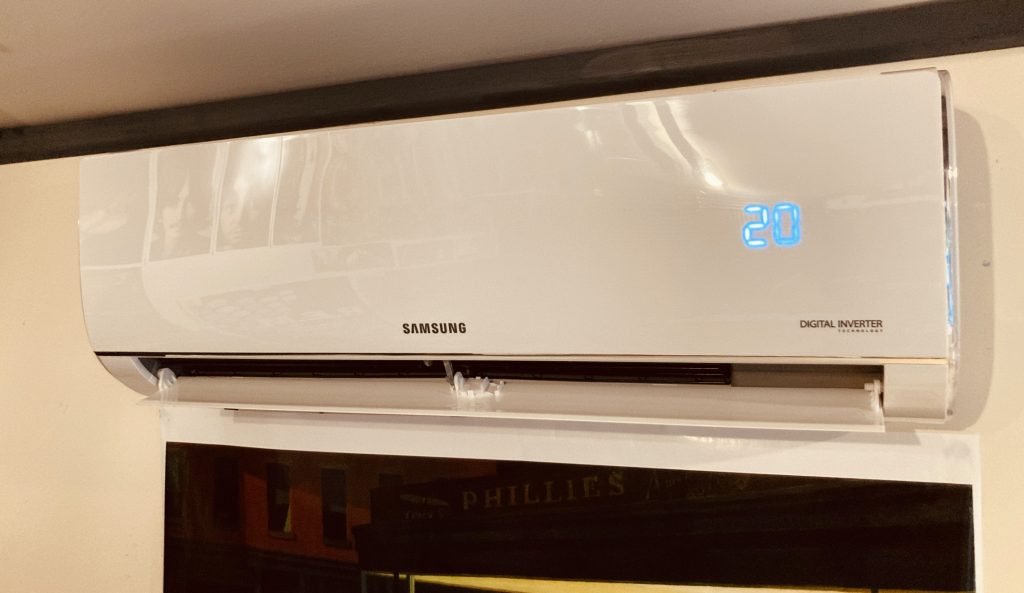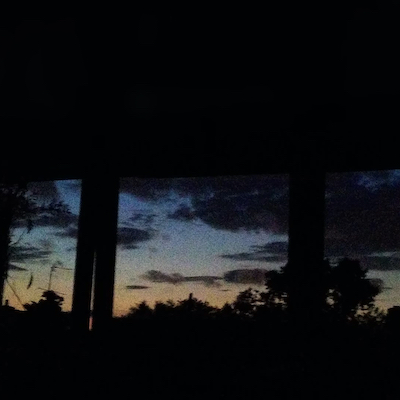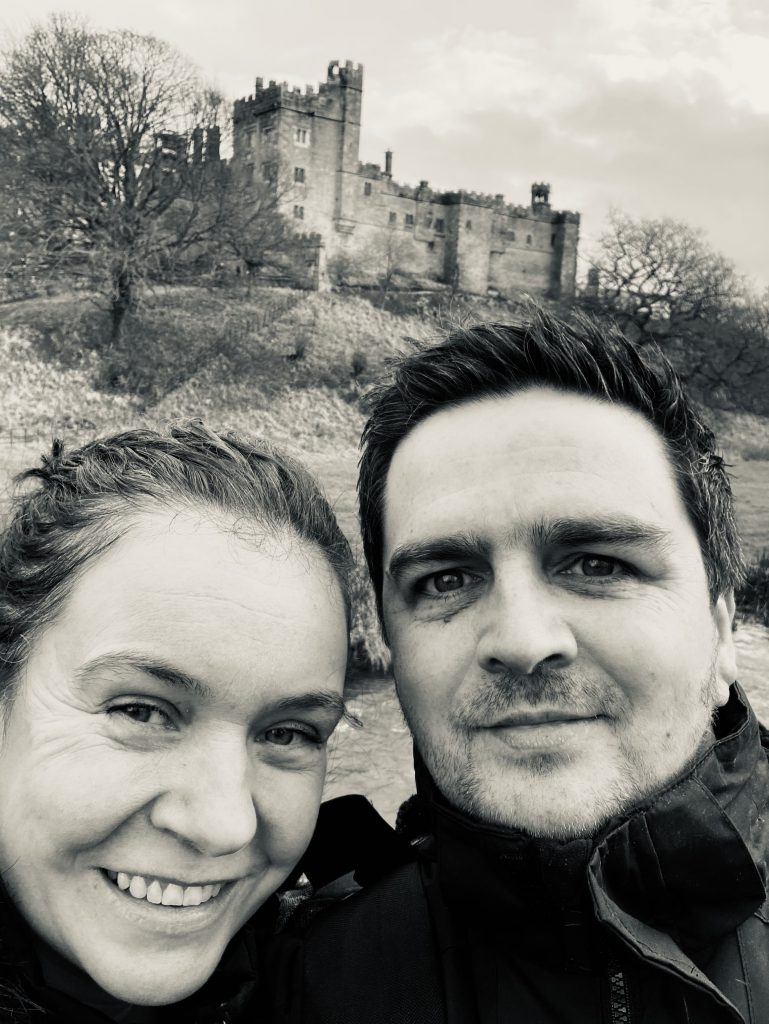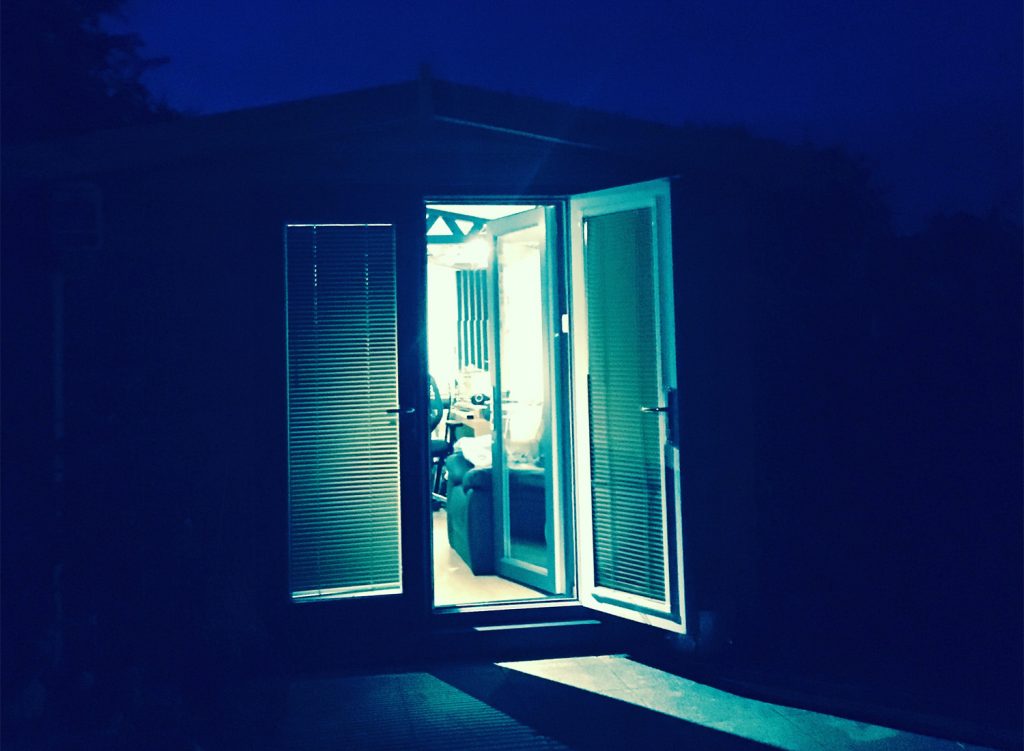I’m writing this blog in a beautifully chilled studio room, whilst it’s 29 degrees outside. Two weeks ago, I wouldn’t even have attempted to go into the studio on a hot afternoon. Now, it’s my favourite place to be.
Air conditioning was installed two weeks ago, and it’s a game-changer.
Anyone that’s recorded here knows that it often got a little too hot for comfort in here. It is, after all, a soundproofed and pretty much air-tight room. Heat came in, and couldn’t escape. Between the months of June and August, most sessions had to end at 2pm as the sun come round to the front of the studio and beat through the glass doors, making everything unbearable.

I thought about getting air-conditioning for years but was worried about three things:
Thankfully, none of the worried have come to pass. It’s very low noise (and I can turn it off if I wanted to record something ultra-quiet), it doesn’t leak sound, and it refrigerates the room brilliantly.
The money that I spent getting it installed can be made back by the fact I can now work on hot afternoons and evenings.
Come and join me!
The new single from Ivan Furber, Stopping Time, was released on New Year’s Day.
It’s a dark, haunting pop song with a superb vocal performance, defraying the fact that this is Ivan’s debut single and first time recording properly.
We started working on the song in October last year and it was really a co-production; Ivan’s Garageband project already had the eerie synth loop that begins the song, the atmospheric synth and the bass melody, along with other elements.
Although it sounded like a demo, there were a lot of good ideas in there so I went through and tweaked the synth sounds, and replayed the bass part with a real bass.

Drums were next and I created a dual drum part, using Native Instruments’ Butch Vig Drums and Abbey Road Studio Drummer. The drums start like an indie song but get a little more tribal as they go along, with lots of toms.
At Ivan’s request, I also added a ticking clock to the percussion – the clock I sampled was the grandfather clock from my Dad’s house!
From here, I added guitars, some chugging guitars that play all he way through, and some chiming atmospheric guitars for the chorus and end section.
When Ivan came to record, we put down 21 vocal tracks. As well a the lead vocal, Ivan put down loads of thickeners in the chorus (you can hear these well in the dropdown chorus at 2:08). The final 30 seconds are a flurry ion vocal ideas that all seem to work very well!
The vocals were processed with liberal amounts of echo and reverb and Soundtoys Decapitator, for the thick, ambient sound.
Ivan has plenty more songs in the pipeline and they are all quite dark, atmospheric and very compelling. Keep an eye out!
Amazingly, I’ve been able to carry on working in 2020. I feel incredibly fortunate that this is the case, as I’m aware that a large percentage of people working in music/sound have been completely screwed this year, and I don’t take my luck for granted.
So this year, more than any other year, I would like to thank everyone that has hired me to work on something for them – it means a lot.
Looking back on this year feels so weird, that I can barely put it into words.
Back in January, I played drums for Joe Seager at one of his gigs in Shrewsbury, and played a filthy game of Cards Against Humanity at a party with some friends in Derbyshire. Both feel like decades ago.
The initial lockdown was hard for everybody, and different reasons for each person. Some people were lonely, some lost their jobs, some got Covid.
We were lucky that none of those applied to us, but our children (aged 11 and 6) were off school from March until September. That’s a whole lot of time for kids to not be seeing their friends, not learning.
My daughter finished junior school in that time and all the things she would normally enjoyed (end of term prom, Guides camp, school trip to the countryside) were cancelled. My son is the family extrovert and thrives on social contact and lovely school and learning. It was sad to see his natural inquisitiveness and upbeat nature gradually melt into months of iPad use.

My wife Sarah did a superb (and very patient) job of home-schooling them both, but it’s really hard to keep kids occupied indoors for six months – it’s unnatural. It would have been easy to get very depressed but everyone has their own coping mechanisms:
For me, I kept a Word document called “Things I Want To Do In 2021”. It’s currently seven pages long, and most of the things on the list are things that we may have taken for granted in any other year, but I’ve longed for this year:
Some of the things I did a lot anyway and really missed them:
Others were things I’d always meant to do and never got round to:
I normally take January off to have a break, tidy the studio, do admin, learn a few new tricks etc. I’m not doing that this year. I’m heading straight back into things.
In the meantime, have a happy new year. Things are very “tier 4” at the moment, but I have faith in the vaccines (is there anything else we can have faith in?) and I look forward to a time this year when we can have some kind of party, go to a gig, go to a pub, whatever your buzz!
“I don’t know what to write for my next blog,” said Ben. “I’ll do it!” came the words from my mouth, before I could stop them. So here it is, the life of a music producer, from a wife’s perspective.
I knew what I was getting into when I married him. He always has some kind of tune in his head, whether it be an elusive U2 b-side (stop playing them to me Ben, I hate them), or a catchy tune he’s just dreamed up.
I remember my friends describing a future picture of me, Ben and our kids in their heads to me, before we got married. Ben was downstairs with a ukulele, playing incessant tunes to the kids who were listening in rapturous wonder and I was upstairs sitting on the bed taking Prozac and fretting. Well it’s not quite got as far as the Prozac yet, but it was an eerie premonition that I have reflected on a few times since.

I’ve become used to bumping into various strangers in my kitchen – there was some confusion when I was told “Wesleyan Brad” was coming to record (I figured just a very religious character who liked music) but found both Wesley and Brad standing in my kitchen drinking tea. I have a little giggle to myself every time he says they’re coming.
Basically, when the doorbell goes, as long as you are carrying an instrument or look as if you might be musical, I’ll let you in and send you to the studio. What Ben does with you after that is up to him.
I love that Ben gets to do his dream job, and he’s really good at it. I often get envious that he has an obvious gift but I am glad he’s putting it to use.
He’s also very professional – I recall the time he tripped outside just before somebody arrived, but he carried on with the recording and limped in to me afterwards to sheepishly ask if I could take him to A&E because he thought he’d broken a rib. So off the four of us went, and surprise surprise, he had!
I also remember the time I arrived home to find 5 sheets of industrial sized soundproof sheeting in my living room. “No other wife would mind!” I was told. Well – a hastily put together Facebook poll proved that he was in fact, wrong. Most other wives cared very deeply and gave me their full sympathy.
There have been things to work through – I still struggle with the fact that he can decide to take a random day off whenever he chooses and work on the weekend instead – I’ve always been used to the 9-5 way of things. I’ve also mastered the art of panic-moving underwear from radiators whilst holding up my side of a conversation.
So how to end this blog? Maybe with a word of advice to other wives who find themselves with whimsical partners. You may as well give them your full support because you only live once and what’s life if you can’t follow your dream?
Oh – and always check that somebody has left the house before shouting down to your husband “have they left yet, I’m not dressed and I can’t find any underwear.”
🙂
Hello all, hope you’re well!
Just a quick one to say that I’ll be closing the studio to visitors once more in November, due to the lockdown.
Sessions for November will be rescheduled for December or January.
And I’m still available for remote working. Read this blog if you want to know more about how to work remotely with me.
Lockdown has affected many of my friends and colleagues in the industry – live artists, sound engineers, other studios, music libraries, theatre sound designers etc.
But the very nature of my work means that a lot of it is remote working – I work with solo artists, do soundtrack work, sound effects and provide voiceover artists, all without needing to see people, and things have ticked over pretty well.
However, when recording a song, there is nothing like actually being in the studio with someone, so I’m delighted to say that I’ll be opening my doors again from Monday 6th July.
There will be precautions, though. I am a family man and my wife has asthma so we can’t afford to be complacent, especially in an air-tight studio room!

With that in mind, here are the measures I’m taking:
Only one person allowed in the studio with me at any time. Keep the 96-piece orchestras at home for now.
A distance of at least one metre is required at all times. I know you want to hug me when I get the reverb right but now is not the time.
Entrance will be through the side passage, rather than the front door. It’s fine; it kind of makes you feel like a famous person sneaking in through the back door.
There will be plenty hand gel for everyone coming in and out of the studio, so please use liberally. My wife bought a huge tub of it after seeing the alcohol content, thinking it was a particularly potent gin.
I will be placing shielding foam on microphones, which will be replaced for each singer. You can take your foam home if you really want to. A bit like a souvenir.
Please bring your own drinks and food. No famous Ben pasta or cups of tea at the moment, I’m afraid!
I’ll be wiping the settees with disinfectant wipes after you use them. That makes you feel good, doesn’t it?
Finally, it goes without saying, but if you are ill in any way – whether that’s with Covid symptoms or anything else – please stay away. We can always reschedule. The same goes if you are living with someone who is ill or have any contact with them.
I look forward to seeing you all in July, and beyond!
© Copyright Haynes Music Productions 2011-2025